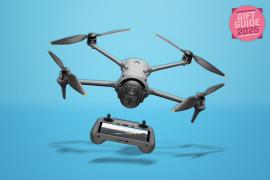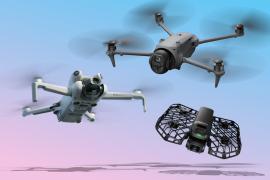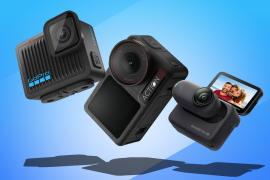I reviewed the DJI Osmo 360 action cam – and it’s an ultra-wide panoramic shot across Insta360’s bows
All all-round debut 360 camera from DJI that will be brilliant for content creators to have in their bag
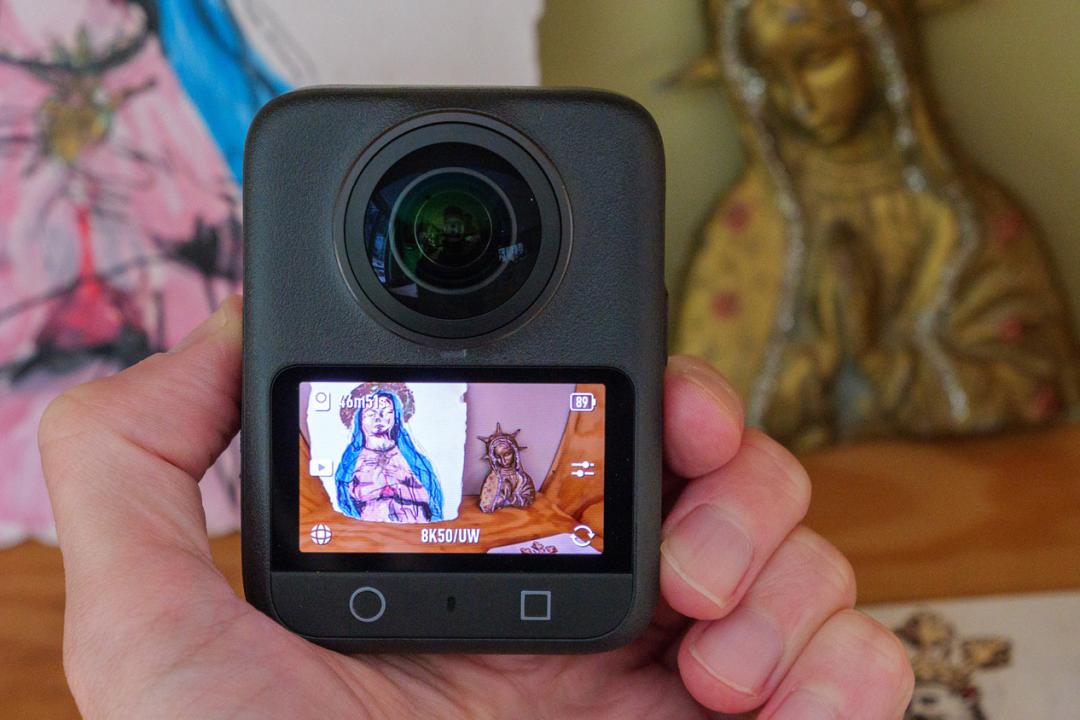
Stuff Verdict
A smart, slick, and surprisingly polished 360 cam that rivals the best out there – and undercuts it on price too.
Pros
- Cheaper than an Insta360 X5
- Slick and easy to use
- Good all-round image quality
Cons
- Not suitable for underwater use
- Non-replaceable lenses
- X5 just edges it on night-time video
Introduction
DJI might be best known for making camera drones, but it’s no stranger to action cameras either, and it’s finally turned its aerial-honed gaze to the world of 360 video.
Enter the DJI Osmo 360, the company’s first attempt at immersive capture. With 8K capture and AI-assisted auto editing, it’s a direct rival to Insta360’s formidable X5, the undisputed reigning champ in this corner of the camera world.
But don’t call it a copycat. The Osmo 360 isn’t just another little grey camera with fish-eye peepers sticking out on either side. It comes with a fresh sensor design, a seriously sharp spec sheet and a welcome price tag that manages to undercut its rival by an eye-opening margin.
As yet, the camera isn’t available in the US. In Europe, the Standard Combo bundle costs £410/€480, while the accessory-crammed Adventure Combo costs £540/€630. A DJI spokesperson told us, “We currently do not have an estimated timeline for when it will be available [in the US], but we will keep you posted when we do.”
DJI’s clearly hoping its first 360 shooter will tempt both existing fans of the brand and newcomers itching to add a little spatial sparkle to their content. So, how does it fare?
How we test cameras
Every camera reviewed on Stuff is tested in a range of lighting conditions, with a variety of subjects and scenes. We use our years of experience to compare with rivals and assess ergonomics, features and general usability. Manufacturers have no visibility on reviews before they appear online, and we never accept payment to feature products.
Find out more about how we test and rate products.
Design & build: squat, sturdy – but not invincible

If DJI raided a drawer marked “Insta360 and GoPro Max parts” and superglued the best bits together, the result would probably look a lot like the Osmo 360. It’s squat and square, with a matte grey shell and two convex lenses staring out from opposite sides. I think it feels premium without being flashy – a confident nod rather than a chest-thumping shout.
There’s a 2in touchscreen on the front, supported by three physical buttons: one for power, one for shooting and another for flipping between the front and rear camera feeds. Underneath, you’ll find both a standard tripod thread and DJI’s magnetic quick-release mount, providing welcome mounting options, while on either side there are covered ports for the battery (and microSD card slot) and USB-C connectivity.
The Osmo 360 is IP68-rated, which means it’ll happily shoot in the snow or a rainstorm and will even survive a dip in the sea – although, confusingly, DJI doesn’t recommend underwater use due to stitching issues. That’s a little odd, especially given that Insta360 practically dares you to dive in with its X5. And unlike the X5, there are no user-replaceable lenses here either. You’ll need to slap on the optional lens protector or spring for DJI Care Refresh accident cover (which offers full replacements rather than repairs) if you’re prone to clumsy moments.
It’s not cut out for the most extreme of activities, then. But for most real-world uses, like walking, biking, paddle boarding and the odd close encounter with a tree branch, the Osmo 360 is tough enough to keep shooting.
Features: editing by AI
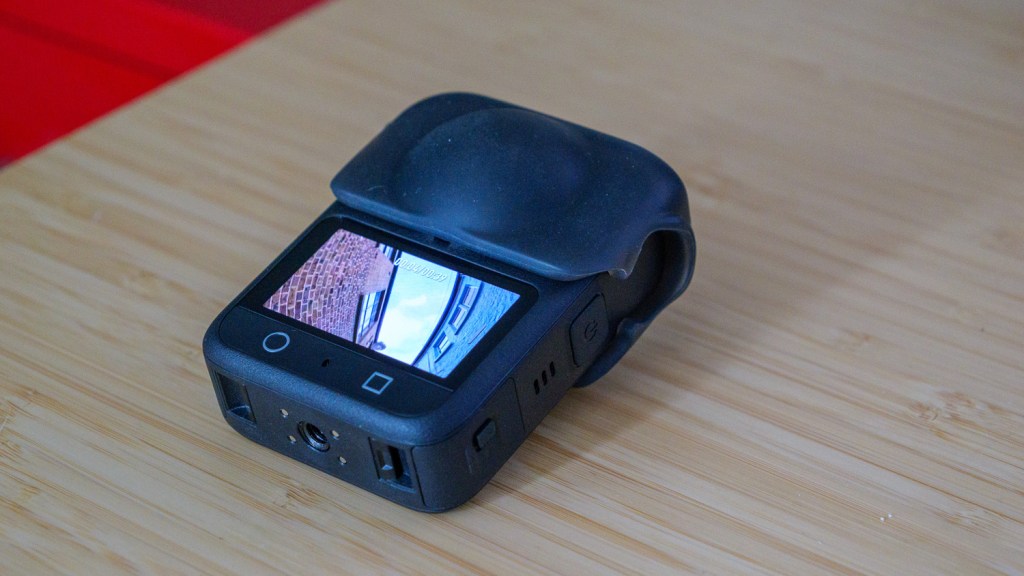
The Osmo 360 isn’t short on features, and DJI’s cleverly hooked it into its existing ecosystem. The camera works with the DJI Mimo mobile app, which gives you live previews, firmware updates and intuitive remote controls, plus AI-assisted reframing and clip creation, which detects highlights and edits them together with transitions and background music. I found this robo editor basic and limited compared to Insta360’s app in some areas, as it only supports daytime-shot cycling, motorcycling and skiing clips, but it’s easy to use and does the job if you just want to throw together a shareable video as quickly as possible.
There’s also a new (and free) desktop app, DJI Studio, for when you want a bit more control. It lets you keyframe, track, trim, colour grade and add background music or filters to your footage with ease, before exporting a polished file. Compared to Insta360’s long-established editing suite, it’s a solid first go. Simple, but not simplistic.
Then there’s the audio. The four built-in mics are decent enough for casual use, but the real magic happens when you pair the camera with a DJI Mic 2 or Mic Mini. Suddenly, you’ve got pristine 24-bit sound, on-screen gain control and wind-baffling voice capture that makes post-production a breeze (no pun intended). It’s a standout feature for creators already living in DJI’s ecosystem.
Performance: perky and polished
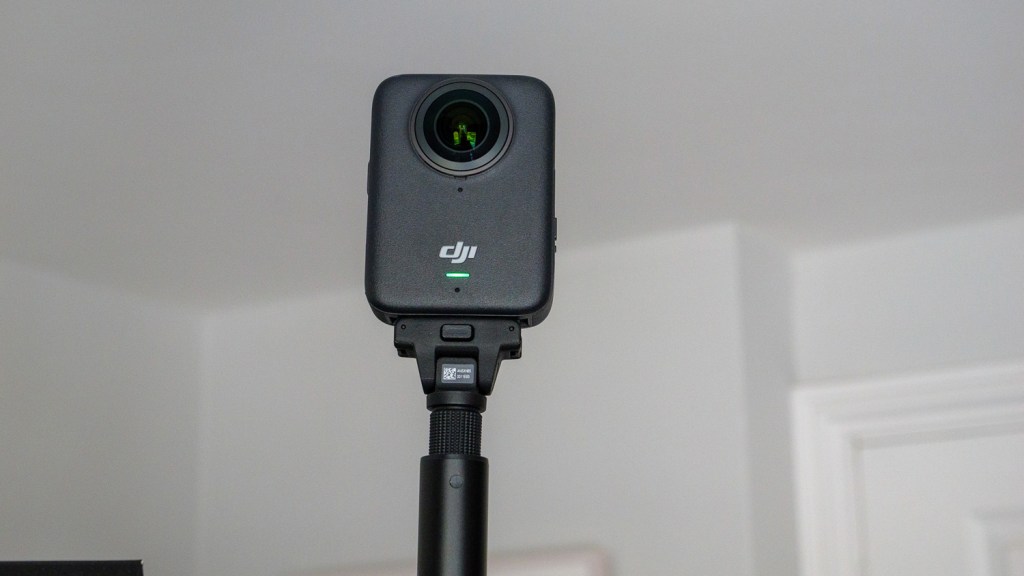
From the moment you power it on, the Osmo 360 feels snappy and reliable. Boot times are nigh-on instantaneous, touchscreen menu navigation is smooth and connecting to the Mimo app is rapid. It feels much more solid than most first-generation products, which is testament to DJI’s hardware experience. The company’s software polish shines too. Whether you’re using the mobile app to throw together a quick social post or diving into Studio on desktop, the workflow is streamlined and beginner-friendly.
The image stabilisation is excellent. Whether mounted on a bike or bouncing around on foot, your horizon stays flatter than an East Anglian landscape. The invisible selfie stick trick works near-flawlessly, and even tricky dynamic motion doesn’t seem to trip up the stitching.
I also like that the camera comes with built-in storage, because it means you don’t have to dig out a microSD card to get recording right away. There’s 128GB of internal space, and a card can add up to 1TB of additional room.
The biggest caveat? The battery life from the 1950mAh cells. While the 90-ish minutes of 8K 30p recording a full charge provides is perfectly fine for casual use, it does fall short of the 185-odd minutes provided by Insta360’s chunkier 2400mAh X5 battery. Still, you can always pack a couple of extras, as they’re affordable enough not to sting.
Image quality: hip to be square
Here’s where things get pixel-peepingly interesting. The Osmo 360 packs dual 1/1.1-inch square CMOS sensors with large 2.4μm pixels – a setup DJI claims maximises usable surface area compared to the cropped rectangular sensors used by rivals.
In practice? The footage looks fantastic. 8K video at up to 50fps is sharp, detailed, and vibrant, although colours sometimes veer into the over-saturated zone. Skies in particular can look a little too Instagram-friendly unless you tone things down manually or shoot in D-Log M for post-shoot grading. But the Osmo 360 gets the key things right: it stitches the two cameras’ videos together with hardly a seam showing, ruthlessly removes selfie sticks from the footage and deals pretty well with flare.
SuperNight mode is surprisingly good for low-light footage; it’s not a night-vision miracle by any means, but certainly usable and noticeably cleaner than many other 360 cams in similar conditions. Boost mode, meanwhile, lets you turn off one lens and use the camera more like a traditional action cam, complete with ultra-wide framing, high dynamic range and up to 120fps slo-mo.
In head-to-head comparisons with the Insta360 X5, the Osmo 360 holds its own. It doesn’t beat the X5 outright, but it doesn’t trail behind either. If you squint at side-by-side footage, DJI’s colour processing is arguably a little more aggressive, and the X5 just edges things in very low light. But for 90% of creators, those differences won’t matter much – especially when you factor in price.
The Osmo 360 can capture still photos too, of course. These can be 120MP, or 30MP with HDR. To be honest, I have never found still photos on 360 cameras particularly exciting, but when you drag them into the mobile or desktop apps to effectively turn them into video clips, they can be quite fun.
DJI Osmo 360 verdict
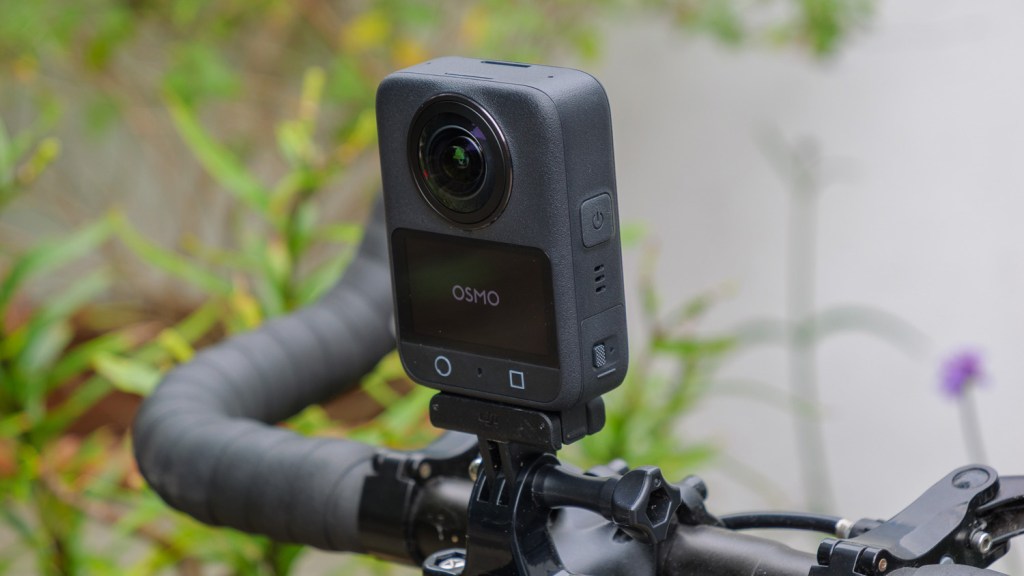
So, is the DJI Osmo 360 a 360-degree slam dunk? Not quite. But it is a superb first effort that puts DJI right up there with the very best in the game. It’s small, easy to use and performs very slickly – all while costing less than its closest rival.
The image quality is excellent, the apps are intuitive and the integration with DJI’s OsmoAudio system is a huge plus for vloggers and creators. There are some minor drawbacks when compared to the Insta360 X5 – slightly shorter battery life, no underwater confidence and those non-replaceable lenses – but they don’t overshadow the package as a whole.
If you’re already in the DJI ecosystem or just dipping your toes into the immersive video waters, this is an easy recommendation. The Osmo 360 isn’t a revolution, but it’s a reminder that DJI doesn’t do half-measures, even when playing catch-up.
Stuff Says…
A smart, slick, and surprisingly polished 360 cam that rivals the best out there – and undercuts it on price too.
Pros
Cheaper than an Insta360 X5
Slick and easy to use
Good all-round image quality
Cons
Not suitable for underwater use
Non-replaceable lenses
X5 just edges it on night-time video
DJI Osmo 360 technical specifications
| Sensor | 2 x 1/1.1in CMOS |
| ISO range | 100 to 51200 |
| Video recording | Up to 8K 50 fps / 4K 120fps |
| Screen | 2in 314 x 556 |
| Storage | 128GB + microSD card slot |
| Connectivity | Wi-Fi 6, Bluetooth 5.1, USB-C |
| Dimensions | 61 x 36.3 x 81mm |
| Weight | 183g |


